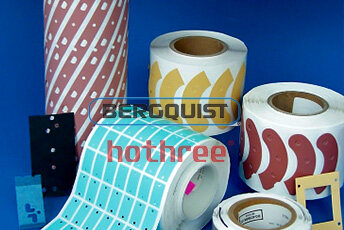Home > Company News > SIL PAD Thermally Conductive Insulators
Company News

Q: What is the primary difference between BERGQUIST SIL PAD TSP A3000 (SIL PAD A2000)
and BERGQUIST SIL PAD TSP 3500(SIL PAD 2000) products?
A: BERGQUIST SIL PAD TSP A3000 (SIL PAD A2000) uses a different filler package than
BERGQUIST SIL PAD TSP 3500 (SIL PAD 2000). This change results in a more compliant
BERGQUIST SIL PAD TSP A3000 (SIL PAD A2000) material that inherently lowers interfacial resistance losses.
This reduction in interfacial resistance results in improved overall thermal performance when measured at lower
pressures in standard ASTM D5470 and TO-220 testing.
Q: Why are the thermal performance curves of BERGQUIST SIL PAD TSP 1800ST(BERGQUIST Sil-Pad 1800ST) and
BERGQUIST SIL PAD TSP 1100ST (BERGQUIST Sil-Pad 1100ST )so flat when compared to other SIL PAD materials?
A: SIL PAD TSP 1800ST(BERGQUIST Sil-Pad 1800ST) and BERGQUIST SIL PAD TSP 1100ST (BERGQUIST Sil-Pad 1100ST )
wet-out the application surfaces at very low pressures. Optimal thermal performance is achieved at pressures as low as 50 psi.
Q: When should I choose BERGQUIST SIL PAD TSP 1680 (BERGQUIST SIL PAD 980)versus
BERGQUIST SIL PAD TSP 1600S (BERGQUIST SIL PAD 900S) for my application?
A: BERGQUIST SIL PAD TSP 1680 (BERGQUIST SIL PAD 980) is specifically formulated to provide exceptional cut-through and crush resistance
in combination with excellent heat transfer and dielectric properties. BERGQUIST SIL PAD TSP 1680 (BERGQUIST SIL PAD 980) has a proven
history of reliability in high-pressure applications where surface imperfections such as burrs and dents are inherently common.
These applications often include heavily machined metal surfaces manufactured from extrusions or castings.
BERGQUIST SIL PAD TSP 1600S (BERGQUIST SIL PAD 900S) carries a high level of crush resistance and is more likely to be used in burr-free or
controlled-surface finish applications.



